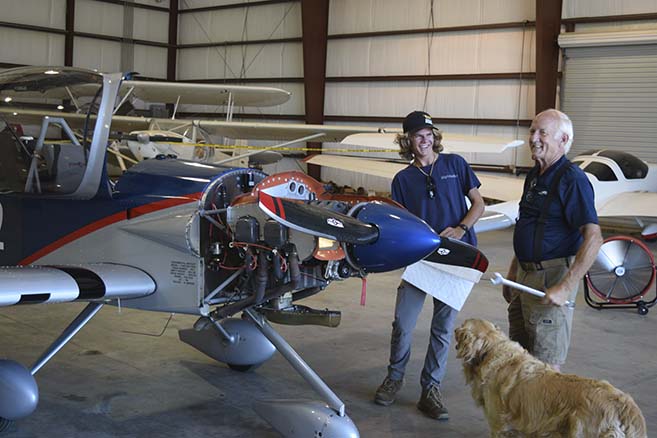
By DON FLETCHER
News Staff Writer
City officials and management of Atmore Municipal Airport (AMA) know they are getting closer to realizing their long-term goal. They realize, however, that they are still about a mile — and a few million dollars — short of getting there.
Airport Manager Don Flynn, Mayor Jim Staff and city attorney Larry Wettermark all agree that the need for a taxiway that will run parallel to AMA’s 5,000-foot runway is the key factor in the airport’s continued growth.
“It’s absolutely necessary, this taxiway is the building block for everything we want to build in the future,” Wettermark told city council members on July 22. “Right now, when a plane lands, the pilot has to go to the end of the runway and do a 180 (degree turn) to taxi back to the other end and get ready for takeoff. If other planes are landing, this ties the airport up for some time.”
He pointed out that the improvement won’t be inexpensive.
“A taxiway is expensive, not something the city can just write a check for,” he said, adding that Escambia County Industrial Development Authority Executive Director Jess Nicholas is “trying to find funding” for the project, which will cost a “minimum of $5-6 million to put in.”
The lawyer said the local airfield has shown steady improvement since SkyWarrior Flight Training, a Pensacola organization that is currently helping train pilots for the U.S. Navy and Southwest Airlines, took over management less than a year ago.
One of those improvements is the ready availability, 24 hours a day, of aviation gasoline, which has led aviators from all over the country to stop in Atmore for fuel if they are flying near the area. Six recently constructed hangars were rented before they were even built, due mainly to a shortage of hangar space in Pensacola, Mobile and other nearby airports.
The city receives a portion of the revenue generated from fuel sales and hangar rentals.
Plans are to start offering Jet-A fuel, which would bring larger aircraft to the local airfield, and Flynn, a certified Air Frame and Power Plant mechanic, has added repair services that weren’t previously offered.
Flynn and Staff each pointed out that negotiations are ongoing with Poarch Band of Creek Indians for a long-term lease on a portion of the airport on which the Tribe could build its own hangar, cutting the cost of executive travel tremendously.
“Since December of last year, there has been a tremendous increase in and out of the airport,” Flynn said. “We’re selling more fuel than the airport ever has. We’ve offered Poarch a 50-year or 100-year lease on this little strip of land next to the other hangars, and the lawyers are trying to work out a deal.”
Staff said the evidence is plain that addition of a parallel taxiway is the key to converting most of the airport’s long-term goals into short-term solutions. But, he said, there has to be money, if money is to be spent.
“It’s going to cost the city some money, that’s for sure,” the mayor said. “We need to do it, but we won’t until we have the money. We’ve got all this paving and everything going on right now. Our only stumbling block is the money. But it’s going to have to be done if our airport is going to grow.”
